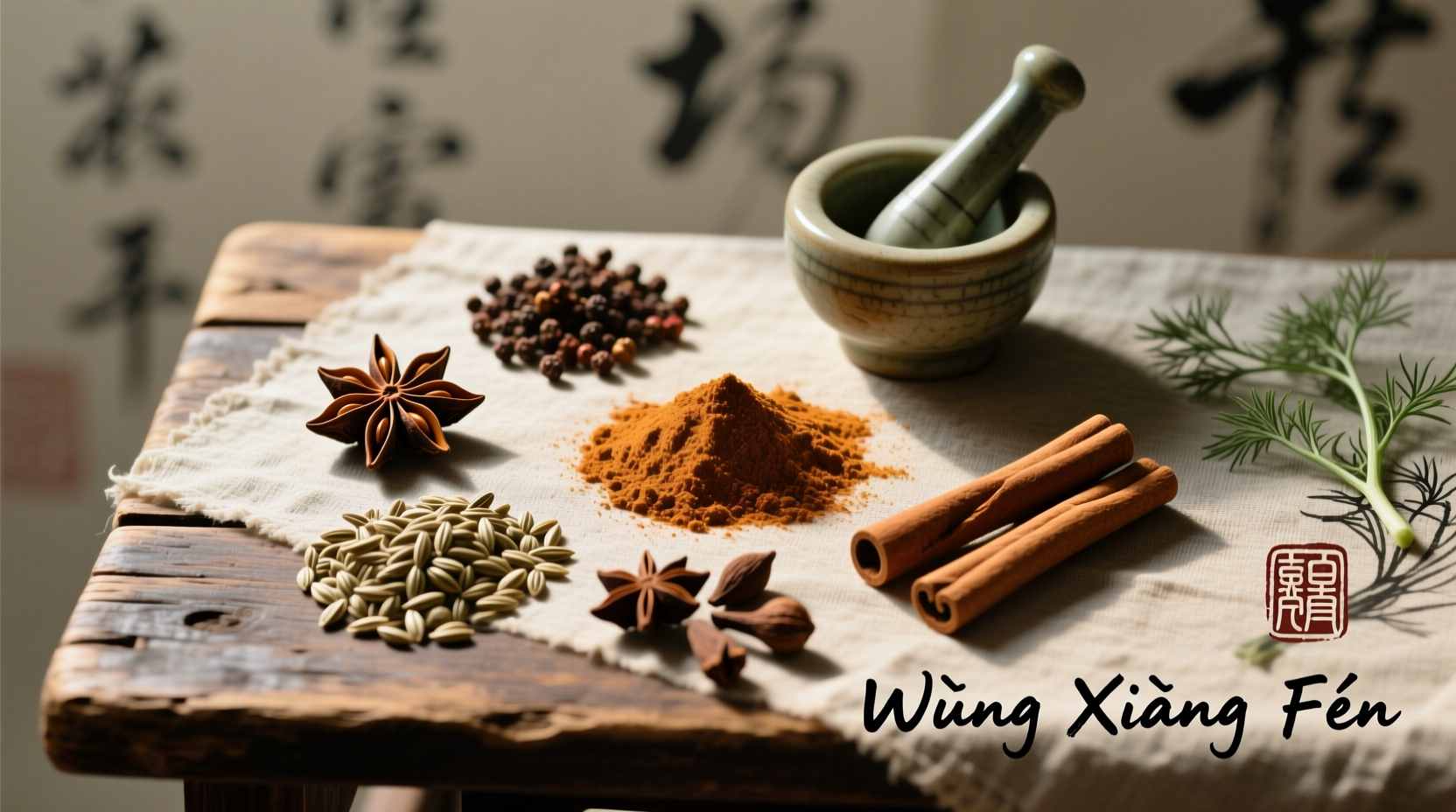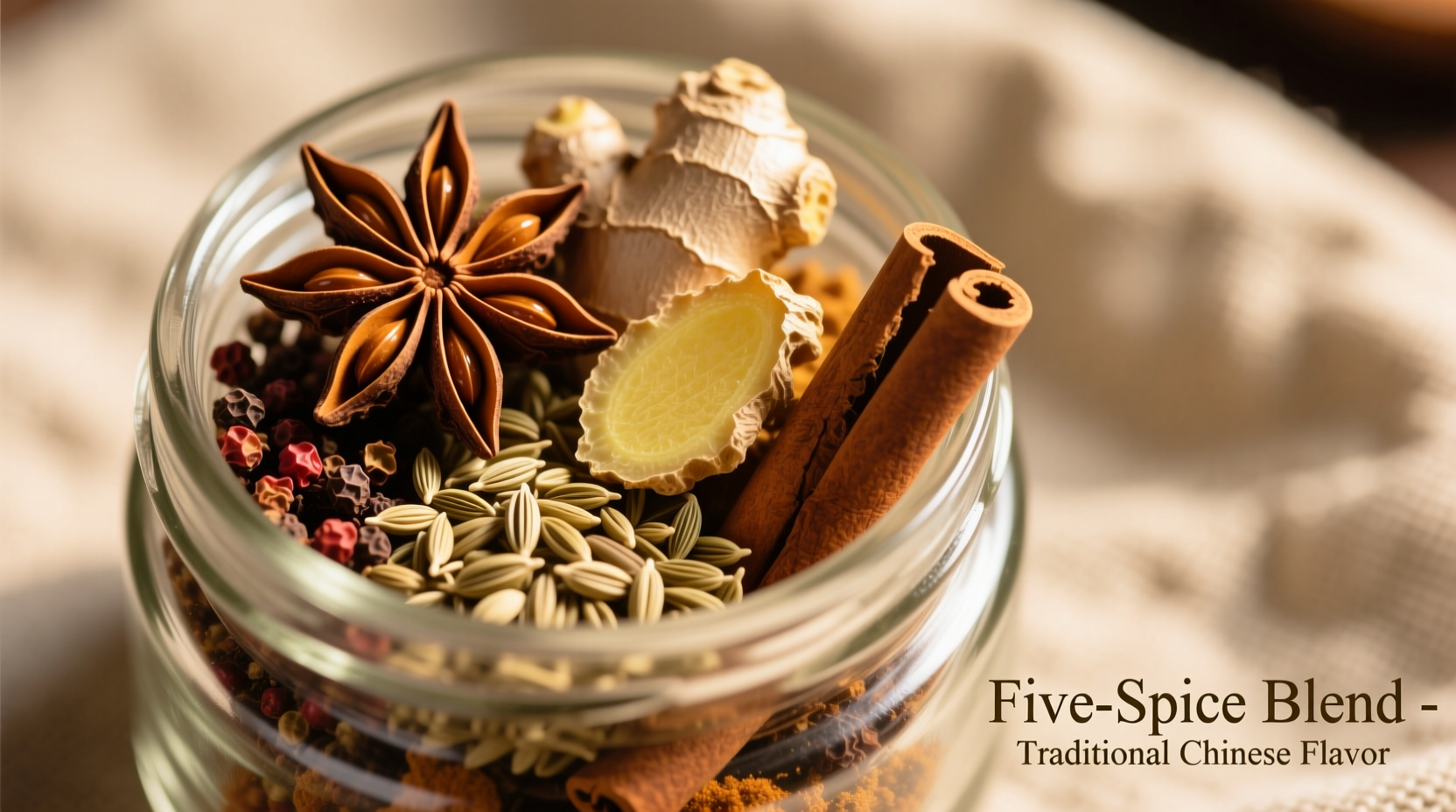The traditional Chinese five-spice powder consists of star anise, cloves, Chinese cinnamon, Sichuan peppercorns, and fennel seeds. This iconic blend balances sweet, sour, bitter, pungent, and salty flavors according to Chinese culinary philosophy, creating the complex seasoning essential for authentic dishes like red-cooked pork and Peking duck.
Ever wonder what gives Chinese barbecue its distinctive aroma or makes that braised pork belly so irresistibly complex? The secret lies in five-spice powder—China's most celebrated seasoning blend. As a chef who's spent decades mastering regional Chinese cooking techniques, I've discovered that understanding this magical mixture transforms ordinary home cooking into authentic culinary experiences.
Why Five-Spice Isn't Always Five Spices
Despite its name, authentic five-spice powder always contains exactly five components representing the five elements of Chinese philosophy. The confusion arises because some commercial blends add extra ingredients like ginger or nutmeg. True traditional blends maintain the precise balance of:
| Spice | Botanical Name | Flavor Contribution | Philosophical Element |
|---|---|---|---|
| Star Anise | Illicium verum | Sweet licorice notes | Wood |
| Cloves | Syzygium aromaticum | Warm, pungent depth | Fire |
| Chinese Cinnamon | Cinnamomum cassia | Spicy-sweet warmth | Earth |
| Sichuan Peppercorns | Zanthoxylum simulans | Citrusy numbing sensation | Metal |
| Fennel Seeds | Foeniculum vulgare | Mild anise sweetness | Water |
The Evolution of China's Signature Spice Blend
Five-spice powder's origins trace back to the Ming Dynasty (1368-1644), evolving from earlier medicinal formulations. Historical records from the US National Library of Medicine show how traditional Chinese medicine principles shaped this culinary staple. The blend's composition stabilized during the Qing Dynasty as regional variations emerged:
- Northern China: Higher star anise content for winter warmth
- Southern China: Increased cinnamon for balancing humid climates
- Cantonese cuisine: Precise 2:1:1:1:1 ratio for delicate seafood dishes
- Sichuan region: Additional chili components in some variations

When Five-Spice Shines (and When It Doesn't)
Understanding context boundaries prevents culinary disasters. This blend excels in specific applications while failing in others:
Ideal Applications
- Braising fatty meats (pork belly, duck)
- Marinating proteins for Chinese barbecue
- Creating master stocks for soups
- Seasoning roasted root vegetables
Poor Applications
- Delicate seafood dishes (overpowers subtle flavors)
- Green vegetable preparations (clashes with fresh notes)
- Western baked goods (incompatible flavor profiles)
- Raw preparations (requires cooking to mellow harsh notes)
Professional Techniques for Maximum Flavor
As demonstrated in my Chengdu cooking classes, proper usage separates authentic preparations from imitations:
- Toasting first: Lightly toast whole spices before grinding to activate essential oils
- Layered addition: Add during cooking's middle phase—early enough to infuse, late enough to preserve volatile compounds
- Ratio precision: Maintain 2 parts star anise to 1 part each of other components for balanced flavor
- Oil infusion: Bloom in hot oil before adding liquids for better flavor extraction
Creating Authentic Homemade Five-Spice
Store-bought versions often contain fillers. My family's century-old recipe requires just five ingredients:
Ingredients
- 2 tablespoons whole star anise
- 1 tablespoon whole cloves
- 1 tablespoon Chinese cinnamon sticks
- 1 tablespoon Sichuan peppercorns
- 1 tablespoon fennel seeds
Method
- Dry toast spices in wok over medium heat until fragrant (2-3 minutes)
- Cool completely before grinding in spice grinder
- Sift through fine mesh strainer to remove coarse particles
- Store in airtight container away from light for up to 6 months
For optimal freshness, grind only what you'll use within two weeks. The USDA Agricultural Research Service confirms that ground spices lose 30-50% of volatile compounds within 30 days of grinding.
Avoiding Common Five-Spice Mistakes
Through years of teaching, I've identified these frequent errors that compromise authentic flavor:
- Overuse: More than 1 teaspoon per pound of meat creates imbalance
- Incorrect substitutions: Regular black pepper instead of Sichuan peppercorns misses the characteristic mouth-numbing quality
- Poor storage: Exposure to light and air degrades flavor compounds within weeks
- Adding too late: Insufficient cooking time prevents proper flavor integration
Remember that five-spice works best as part of a flavor symphony, not a solo performance. Pair it with soy sauce, rice wine, and rock sugar for authentic red-cooked dishes that honor centuries of culinary tradition.











 浙公网安备
33010002000092号
浙公网安备
33010002000092号 浙B2-20120091-4
浙B2-20120091-4